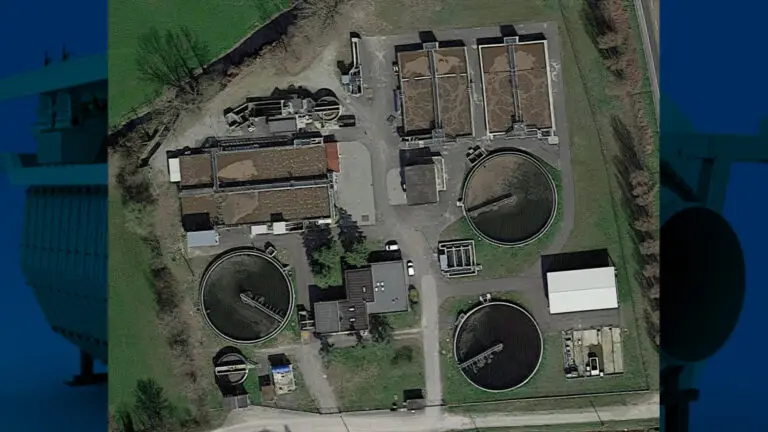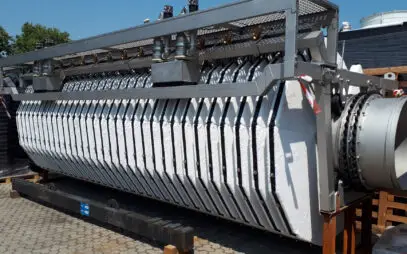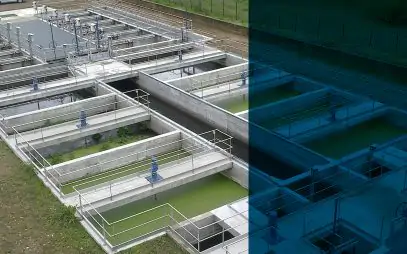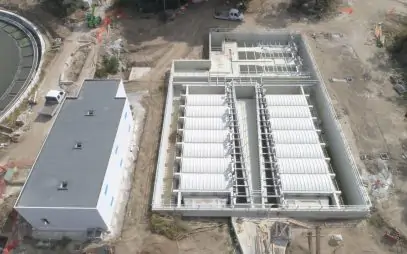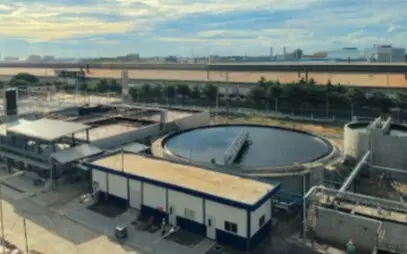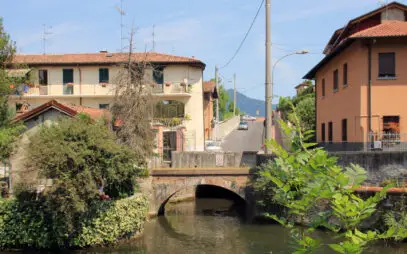1. Needs identified
The depuration chain of the Lodi plant consisted, until 2017, of the stages of:
- water pre-treatment (screening);
- primary treatment (desanding and de-oiling);
- secondary treatment (denitrification, oxidation, settling);
Two main objectives were set with the last intervention:
- To bring the plant to a capacity of 60,000 population equivalents;
- and to ensure compliance with the legal discharge limit through refinement of suspended solids removal.
In particular, in order to achieve the latter objective, it was necessary to add, downstream of the secondary treatment and before the disinfection process, a tertiary filtration stage.
The contractor in charge of the work therefore planned to install a cloth filtration system from MITA Water Technologies.
2. Adopted solution: tertiary cloth filtration
After an analysis of the data and characteristics of the plant, the pile cloth filters to be installed were identified, which are of the MSF 28/140 PPC FHD type.
Each unit supplied consists of filter discs, each with a filtering surface area of 5 m², and mounted on a hollow central shaft. Filtration takes place by gravity with the machine stopped, taking advantage of the level difference between inlet and outlet. The discs are completely submerged in the water to be treated. Feeding is from the outside of the equipment to the inside, with passage through the filter panels and discharge through the central pipe.
In this case, the disc filter type MSF 28/140 PPC FHD is intended for installation in concrete tank, has a total filtering area of 140 m2 and consists of:
- 28 filtering discs mounting Polstoff cloths;
- central shaft supporting and evacuating clarified water, equipped with support wheels and guide at the ends. Material AISI 304 with plastic accessories;
- motorization consisting of a 0.75 kW submersible type gear motor, a double chain drive system made of plastic material, a mobile gear motor support with chain tensioning screws;
- 7 countercurrent cloth washing devices, each arranged for cleaning 4 discs;
- 4 submersible pumps (2 + 2 in-line backup) for backwashing of filter cloths and one submersible pump for bottom sludge purging and service tank emptying.
The carpentry, metal parts and hardware are made of AISI 304 stainless steel. The double drive chain, drive sprockets and disc frame are made of plastic material.
Total weight of the MSF 28/140 PPC filter: about 2,500 kg.
3. Advantages of the Polstoff (pile) cloth filter system
ess than or equal to 10 mgSS/l.
In addition, the free Polstoff fiber used is designed for specific application on tertiary final finishing treatments or for reuse for irrigation and industrial purposes. Due to the tortuous path of water through the cloth, the same advantages of sand filtration are achieved. This results in high filtration performance with high sludge loading capacity. As a consequence, there is a low backwash frequency.
The energy consumption required is extremely competitive with other filtration systems. In fact, the machines are normally stopped and rotation occurs only in conjunction with backwashing. Even during this phase, the maximum value of power absorbed during the backwash cycle is always about 4.0 kW (gearbox plus 2 backwash pumps). This is due to the wire cleaning system, which is achieved by means of vacuum, with far lower energy consumption than pressurized water systems.
Further advantages of the system:
- great flexibility and ease of management due to complete automation. In particular, the backwash frequency is self-adjusting according to the degree of filter clogging;
- maintenance is simplified and easy thanks to easy access to wear parts. In addition, the suction cloth washing technology avoids mechanical stress on the cloth, contributing substantially to the durability of the filter material;
- the useful filter area of 140 m² for each unit is 100% usable because it is totally immersed;
- the civil works, necessary for the containment of the equipment, are particularly small in size and do not require covering, any aerosol phenomenon being absent.
Ask for Information